RAC-GAN-Based Scenario Generation for Newly Built Wind Farm
Abstract
1. Introduction
2. Selection of Source Power Station Based on GRA
2.1. Screening of Meteorological Features Considering the Correlation of Wind Power Output Influencing Factors
2.2. Source Power Station Determination Considering the Consistency of Meteorological Data Trends
2.2.1. Steps of GRA
- (1)
- Construction of meteorological data set
- (2)
- Normalization of data
- (3)
- Calculation of correlation degree
2.2.2. Selection of Source Power Station
3. RAC-GAN-Based Scenario Generation of Wind Power Output
3.1. Clustering of Meteorological Historical Data Based on K-Means Method
3.2. RAC-GAN-Based Wind Power Output Scenario Generation
3.2.1. Aided Classification Generates Adversarial Networks
3.2.2. RAC-GAN-Based Wind Power Output Scenario Generation
4. Evaluation of Scenario Generation Effects
- the power output data of the selected source power station should be similar to that of the target power station (no power output data of the target power station are assumed during the experiment, but they should be analyzed during the evaluation);
- the probability distribution of scenarios generated by the power output data of the source power station should be similar to that of the target power station;
- the method proposed in this paper should be more advantageous when compared with other existing deep learning-based scenario generation methods.
4.1. Characterization of Probability Distributions
4.2. Comparison of Methods of Scenario Generation
4.2.1. Properties of the Probability Distribution of the Comparison Experiment
- From the comparison of Model 1 and Model 2, it can be seen that the difference between Model 1 and Model 2 is small in Clusters 3 to 6 in terms of probability distribution characteristics. Model 1 is slightly better than Model 2, and the generated data fit the real data better. From the probability distribution characteristics of Cluster 1 and Cluster 2, it can be seen that both Model 1 and Model 2 are more effective when Cluster 1 is near 25 MW and Cluster 2 is near 45 MW, except for these two places, where Model 1 is much stronger than Model 2 overall. Combined with Figure 4 and Figure 6, it can be seen that both Cluster 1 and Cluster 2 are characterized by a small number of scenes, only 18 and 19 days, respectively, i.e., the number of historical data is small, while Model 2 uses the C-GAN method for scene generation, which is not effective in generating scenes with little historical data. Therefore, the proposed method in this paper can achieve a better fitting effect when there are less data.
- Comparing Model 1 with Model 3 and Model 4, it can be seen that Model 1 is significantly better than Model 3 and Model 4 in scenario generation for each cluster. This is because the method used in this paper for the selection of source power stations can analyze whether the time-series wind speed data are consistent in terms of change trends, and the selection of source power plants is based on the changing characteristics of wind speed data, while Model 3 and Model 4 are based on geographical factors in the selection of original power plants, which are similar in terms of geographical location or altitude, but cannot reflect the characteristics of wind speed data, which is the most critical factor for wind power output. Therefore, the generated data do not fit the historical data well in terms of probability distribution characteristics. Meanwhile, under the premise that both RAC-GANs are used for scene generation, the scenes generated by using Model 3 and Model 4 to select source power plants have poor performance in each cluster, which can indicate that the appropriate selection of source power plants is an important factor.
4.2.2. Evaluation of Scenario Generation Effects
- From the comparison of Model 1 and Model 2, it can be seen that the RMSE in Model 1 is smaller with the average value of 1.153 and the maximum value of 1.8, which is much lower than Model 2 (the average value is 4.23 and the maximum value is 6.8); similarly, the MAE in Model 1 (the average value is 0.801 and the maximum value is 1.4) is much smaller than that of Model 2 (the average value is 3.02). Therefore, the scene generation using RAC-GAN has good results.
- The comparison between Model 1, Model 3, and Model 4 shows that the three evaluation indexes of Model 1 outperform those of Model 3 and Model 4. Moreover, the generation results of Model 2 are stronger than those of Model 3 and Model 4, which indicates that the selection method of source power plants is important for scene generation results. The selection of source power plants by using the GRA method is more effective than that of using geographical factors.
5. Conclusions
Author Contributions
Funding
Data Availability Statement
Conflicts of Interest
Nomenclature
| R | Correlation coefficient of two variables. |
| Covariance of the two variables. | |
| Standard deviation of and . | |
| Average of and . | |
| Wind speed at the moment of the day. | |
| Average wind speed on the day. | |
| Arbitrary values, minimum values and maximum values in the original data. | |
| Normalized data. | |
| Eigenvector of the target power station on day . | |
| Eigenvector of the historical day of the proximity power station. | |
| element of the historical day feature vector of the target power station, the proximity power station. | |
| Number of correlation coefficients. | |
| Resolution factor. | |
| Total number of correlation coefficients for each component. | |
| Wind speed, the rated wind speed, the cut-in and cut-out wind speed. | |
| Rated power of the fan. | |
| Number of clustered samples. | |
| Number of clusters. | |
| to the samples of other clusters. | |
| to other samples in the same cluster. | |
| Output ofs G and D network in GAN. | |
| (·) | Expected value. |
| Correct source loss function and class loss function. | |
| Average of generated scene value sampling points, real scene value sampling points, and real scene data. |
References
- Hu, J.X.; Li, H.R. A transfer learning-based scenario generation method for stochastic optimal scheduling of microgrid with newly-built wind farm. Renew. Energy 2022, 185, 1139–1151. [Google Scholar] [CrossRef]
- Tu, Q.Y.; Miao, S.H.; Yao, F.X.; Li, Y.W.; Yin, H.R.; Han, J.; Zhang, D.; Yang, W.C. Forecasting Scenario Generation for Multiple Wind Farms Considering Time-series Characteristics and Spatial-temporal Correlation. J. Mod. Power Syst. Clean Energy 2021, 9, 837–848. [Google Scholar] [CrossRef]
- Tan, J.; Wu, Q.W.; Zhang, M.L.; Wei, W.; Hatziargyriou, N.; Liu, F.; Konstantinou, T. Wind power scenario generation with non-separable spatio-temporal covariance function and fluctuation-based clustering. Int. J. Electr. Power Energy Syst. 2021, 130, 106955. [Google Scholar] [CrossRef]
- Zhang, R.; Li, G.; Bu, S.; Kuang, G.; He, W.; Zhu, Y.; Aziz, S. A Hybrid Deep Learning Model with Error Correction for Photovoltaic Power Forecasting. Front. Energy Res. 2022, 10, 1103. [Google Scholar] [CrossRef]
- Zhang, Y.F.; Ai, Q.; Xiao, F.; Hao, R.; Lu, T.G. Typical wind power scenario generation for multiple wind farms using conditional improved Wasserstein generative adversarial network. Int. J. Electr. Power Energy Syst. 2020, 114, 105388. [Google Scholar] [CrossRef]
- Cramer, E.; Paeleke, L.; Mitsos, A.; Dahmen, M. Normalizing flow-based day-ahead wind power scenario generation for profitable and reliable delivery commitments by wind farm operators. Comput. Chem. Eng. 2022, 166, 107923. [Google Scholar] [CrossRef]
- Wang, K.S.; Yu, H.; Song, G.Y.; Xu, J.; Li, J.; Li, P. Adaptive forecasting of diverse electrical and heating loads in community integrated energy system based on deep transfer learning. Front. Energy Res. 2022, 10, 8216. [Google Scholar] [CrossRef]
- Chen, Y.Z.; Wang, Y.S.; Kirschen, D.; Zhang, B.S. Model-Free Renewable Scenario Generation Using Generative Adversarial Networks. IEEE Trans. Power Syst. 2018, 33, 3265–3275. [Google Scholar] [CrossRef]
- Tang, C.H.; Wang, Y.S.; Xu, J.; Sun, Y.Z.; Zhang, B.S. Efficient scenario generation of multiple renewable power plants considering spatial and temporal correlations. Appl. Energy 2018, 221, 348–357. [Google Scholar] [CrossRef]
- Huang, N.T.; He, Q.K.; Qi, J.J.; Hu, Q.K.; Wang, R.J.; Cai, G.W.; Yang, D.Z. Multinodes interval electric vehicle day-ahead charging load forecasting based on joint adversarial generation. Int. J. Electr. Power Energy Syst. 2022, 143, 108404. [Google Scholar] [CrossRef]
- Feng, Z.-k.; Niu, W.-j.; Zhang, R.; Wang, S.; Cheng, C.-t. Operation rule derivation of hydropower reservoir by k-means clustering method and extreme learning machine based on particle swarm optimization. J. Hydrol. 2019, 576, 229–238. [Google Scholar] [CrossRef]
- Fan, Y.; Liu, C.; Wang, J. Prediction algorithm for springback of frame-rib parts in rubber forming process by incorporating Sobol within improved grey relation analysis. J. Mater. Res. Technol. 2021, 13, 1955–1966. [Google Scholar] [CrossRef]
- Zolfani, S.H.; Gorcun, O.F.; Kundu, P.; Kucukonder, H. Container vessel selection for maritime shipping companies by using an extended version of the Grey Relation Analysis (GRA) with the help of Type-2 neutrosophic fuzzy sets (T2NFN). Comput. Ind. Eng. 2022, 171, 108376. [Google Scholar] [CrossRef]
- Lee, C.; Lee, J.W.; Ryu, S.G.; Oh, J.H. Optimum design of a large area, flexure based XY theta mask alignment stage for a 12-inch wafer using grey relation analysis. Rob. Comput. Integr. Manuf. 2019, 58, 109–119. [Google Scholar] [CrossRef]
- Huang, N.; Wang, W.; Cai, G. Optimal configuration planning of multi-energy microgird based on deep joint generation of source-load-temperature scenarios. CSEE J. Power Energy Syst. 2020. [Google Scholar] [CrossRef]
- Xu, J.; Li, H.; Hou, S. Autoencoder-guided GAN for minority-class cloth-changing gait data generation. Digit. Signal Process. 2022, 128, 103608. [Google Scholar] [CrossRef]
- Zhu, B.; Pan, X.; vanden Broucke, S.; Xiao, J. A GAN-based hybrid sampling method for imbalanced customer classification. Inf. Sci. 2022, 609, 1397–1411. [Google Scholar] [CrossRef]
- Dharanya, V.; Raj, A.N.J.; Gopi, V.P. Facial Expression Recognition through person-wise regeneration of expressions using Auxiliary Classifier Generative Adversarial Network (AC-GAN) based model. J. Visual Commun. Image Represent. 2021, 77, 103110. [Google Scholar] [CrossRef]
- Huang, N.; Chen, Q.; Cai, G.; Xu, D.; Zhang, L.; Zhao, W. Fault Diagnosis of Bearing in Wind Turbine Gearbox under Actual Operating Conditions Driven by Limited Data with Noise Labels. IEEE Trans. Instrum. Meas. 2021, 70, 1–10. [Google Scholar] [CrossRef]
- Yang, R.; Yang, X.; Wang, L.; Li, D.; Guo, Y.; Li, Y.; Guan, Y.; Wu, X.; Xu, S.; Zhang, S.; et al. Commissioning and clinical implementation of an Autoencoder based Classification-Regression model for VMAT patient-specific QA in a multi-institution scenario. Radiother. Oncol. 2021, 161, 230–240. [Google Scholar] [CrossRef]
- Ren, F.; Long, D. Carbon emission forecasting and scenario analysis in Guangdong Province based on optimized Fast Learning Network. J. Clean. Prod. 2021, 317, 128408. [Google Scholar] [CrossRef]
- Wang, Y.; Shen, R.; Ma, M. Research on ultra-short term forecasting technology of wind power output based on various meteorological factors. Energy Rep. 2022, 8, 1145–1158. [Google Scholar] [CrossRef]
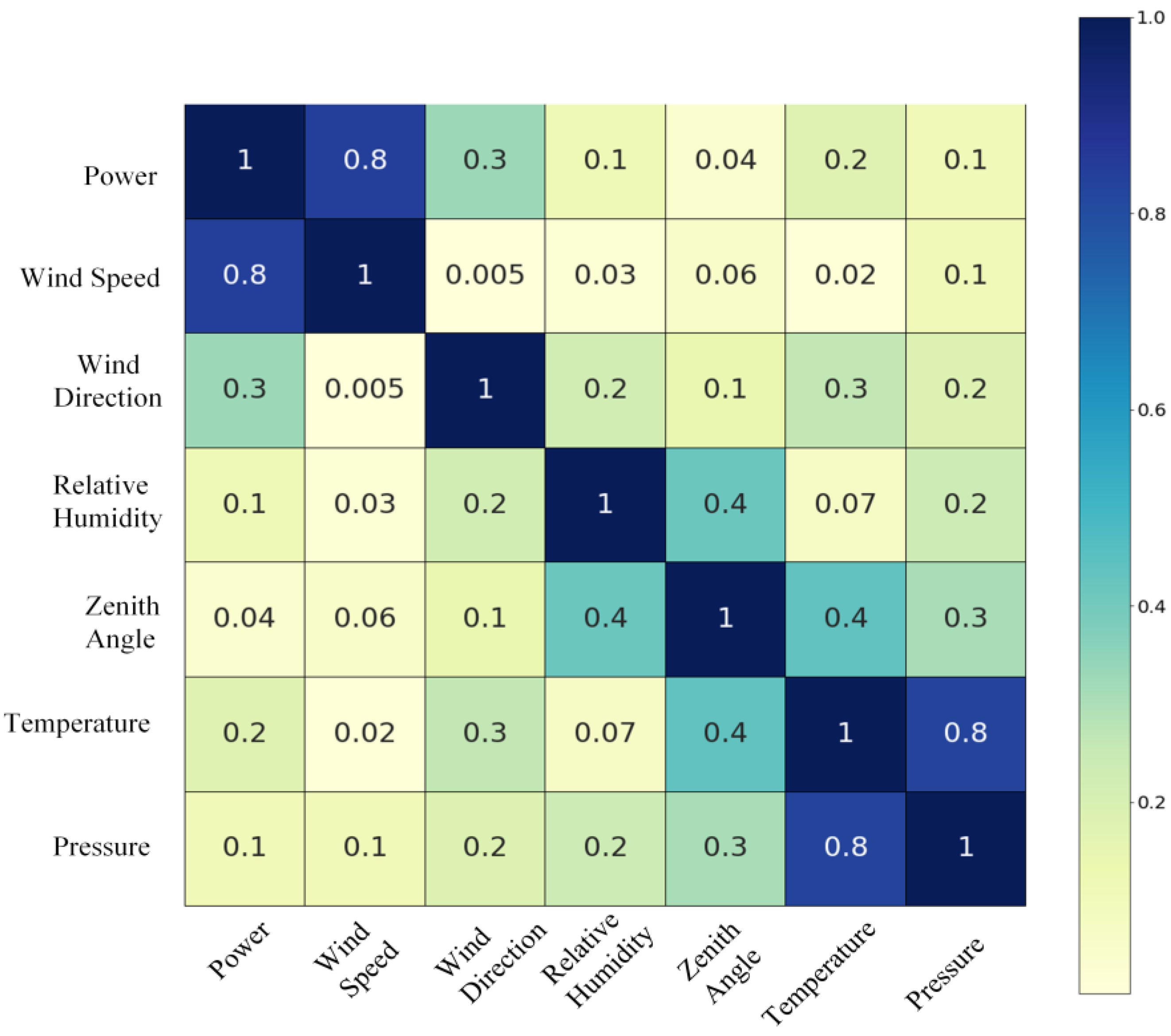
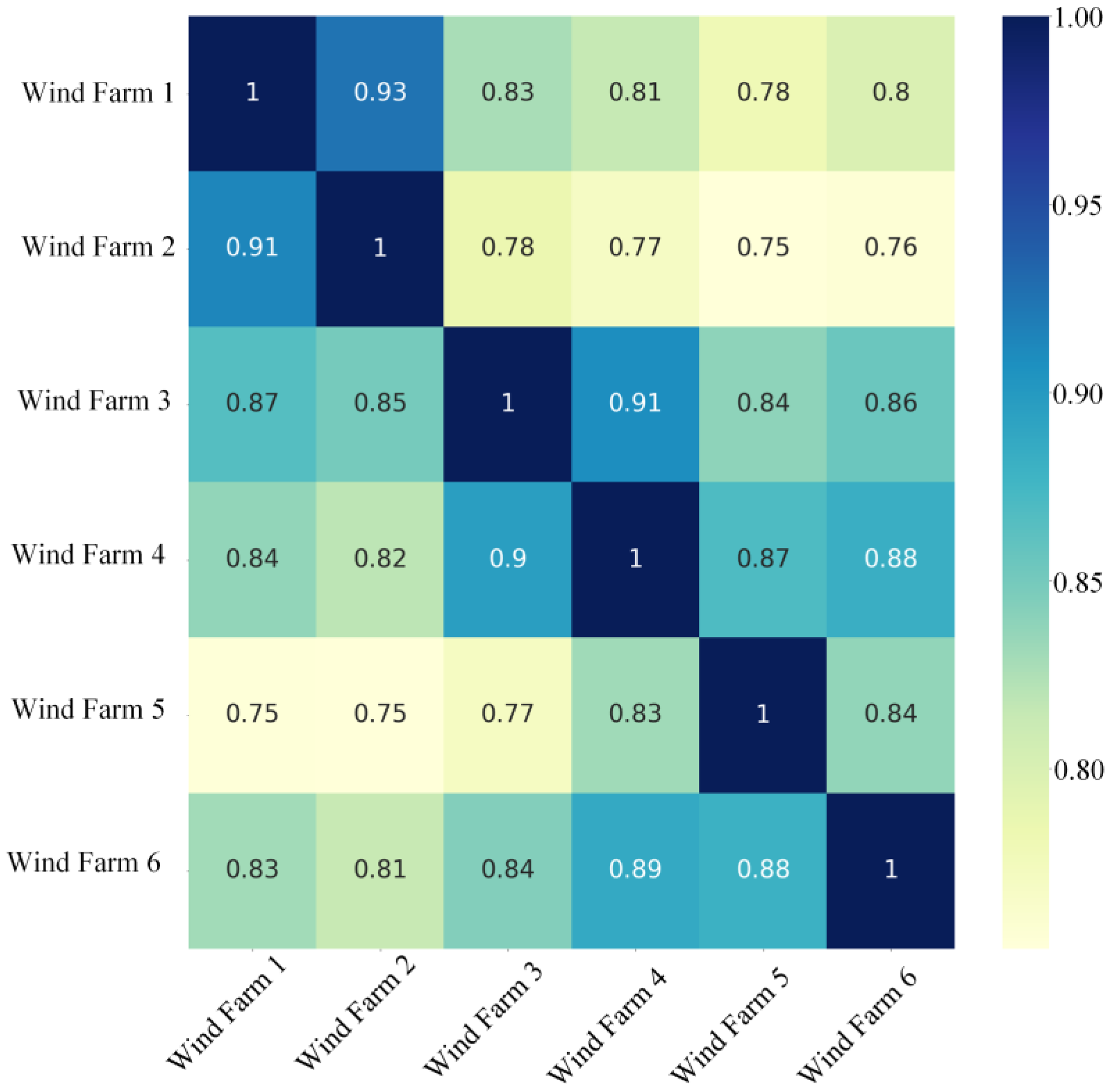
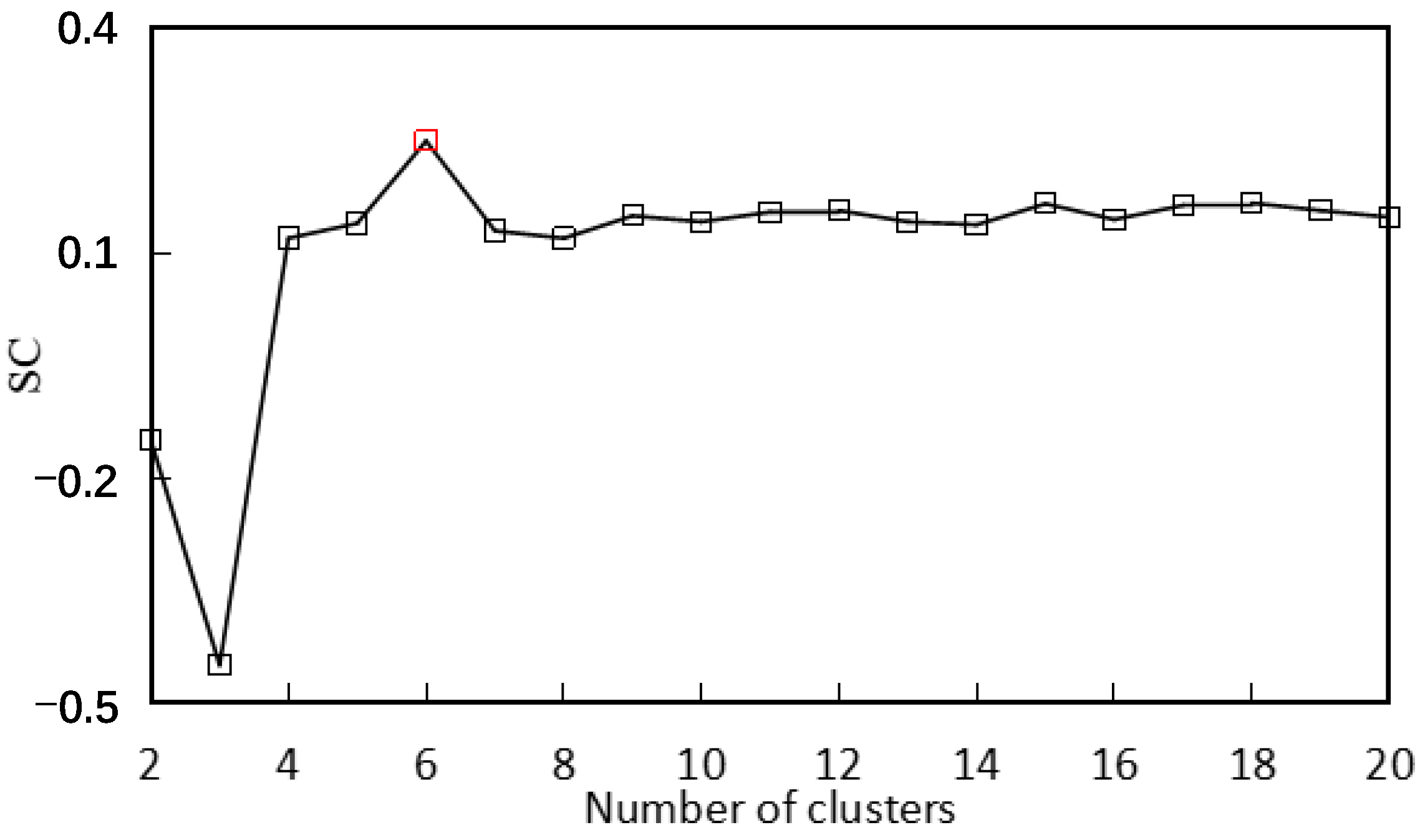


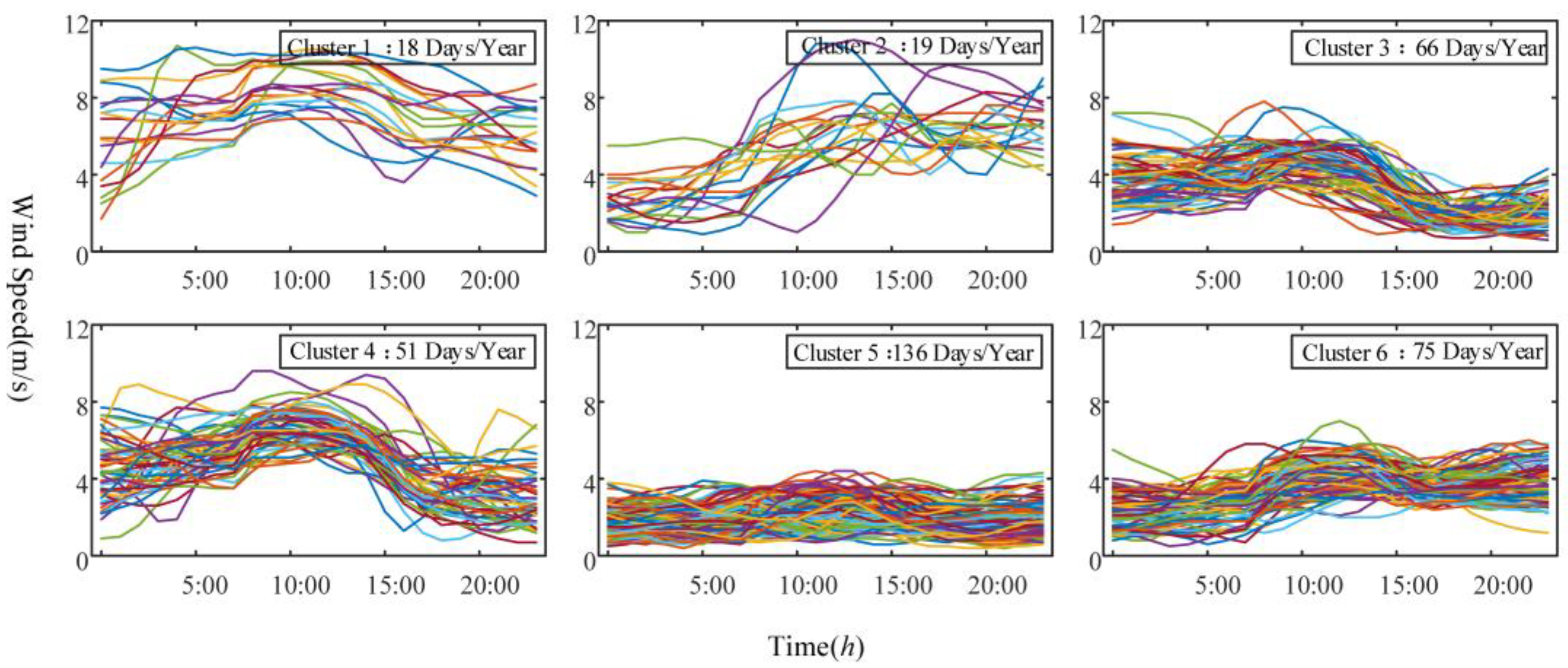


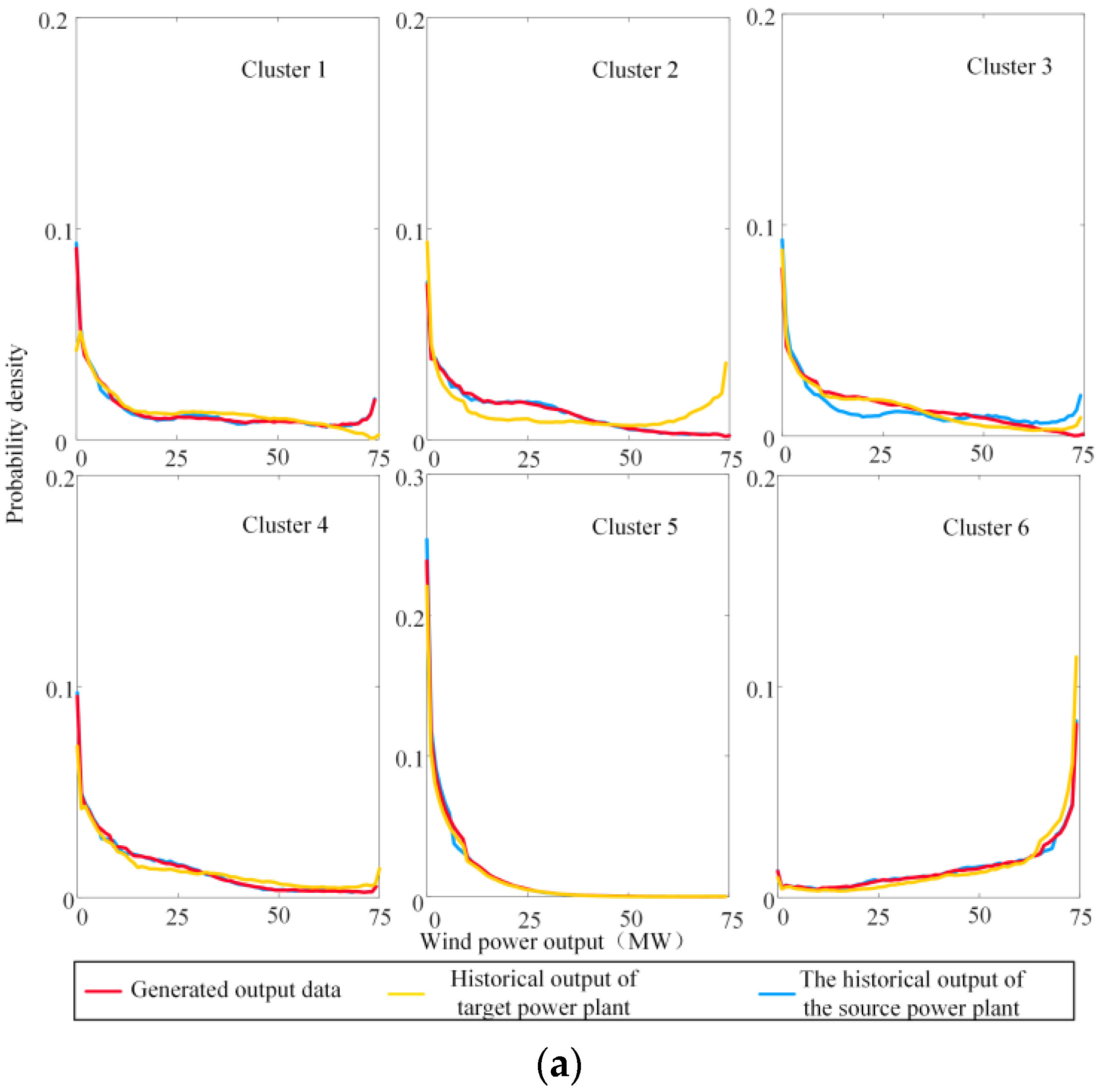
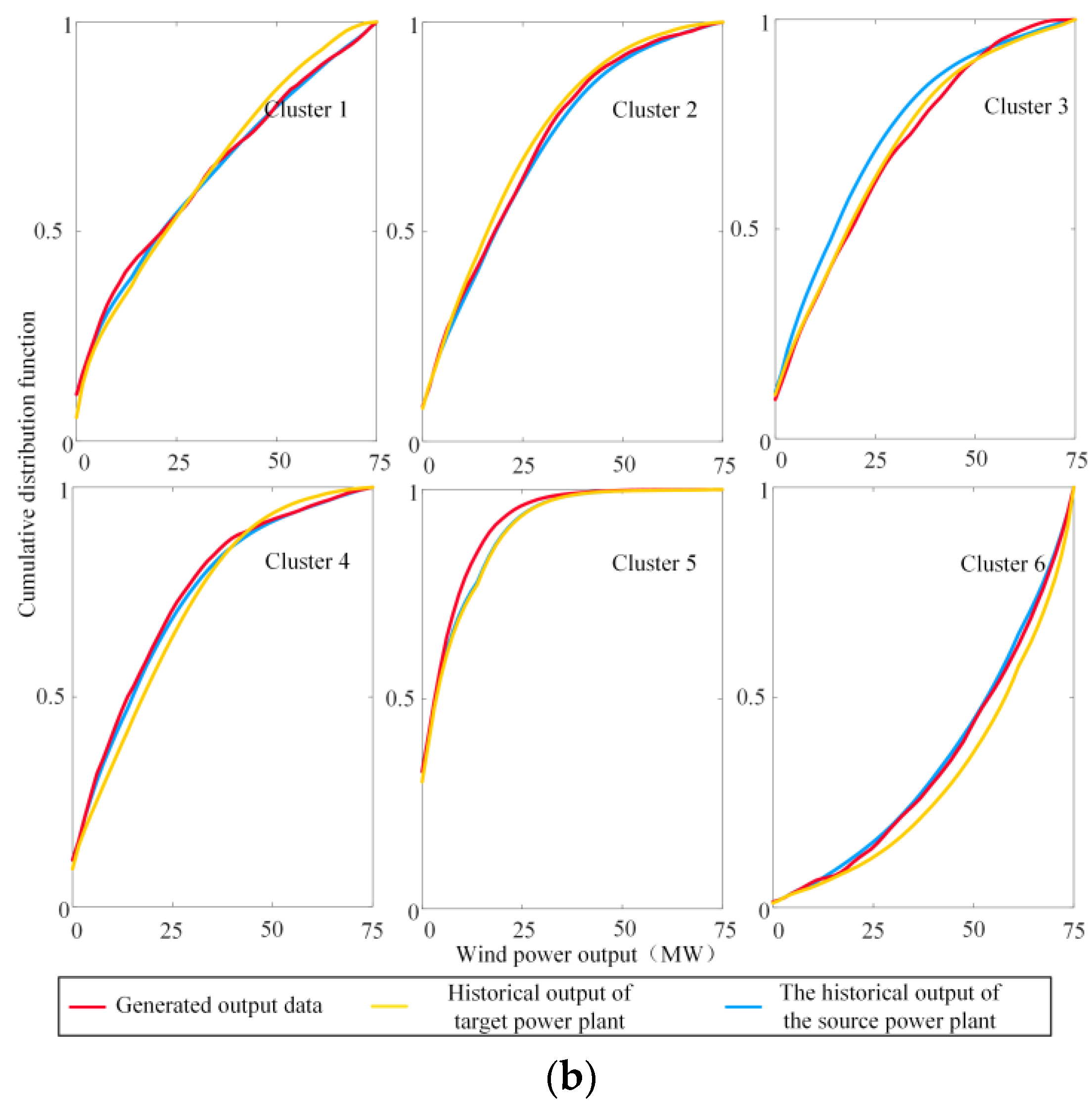
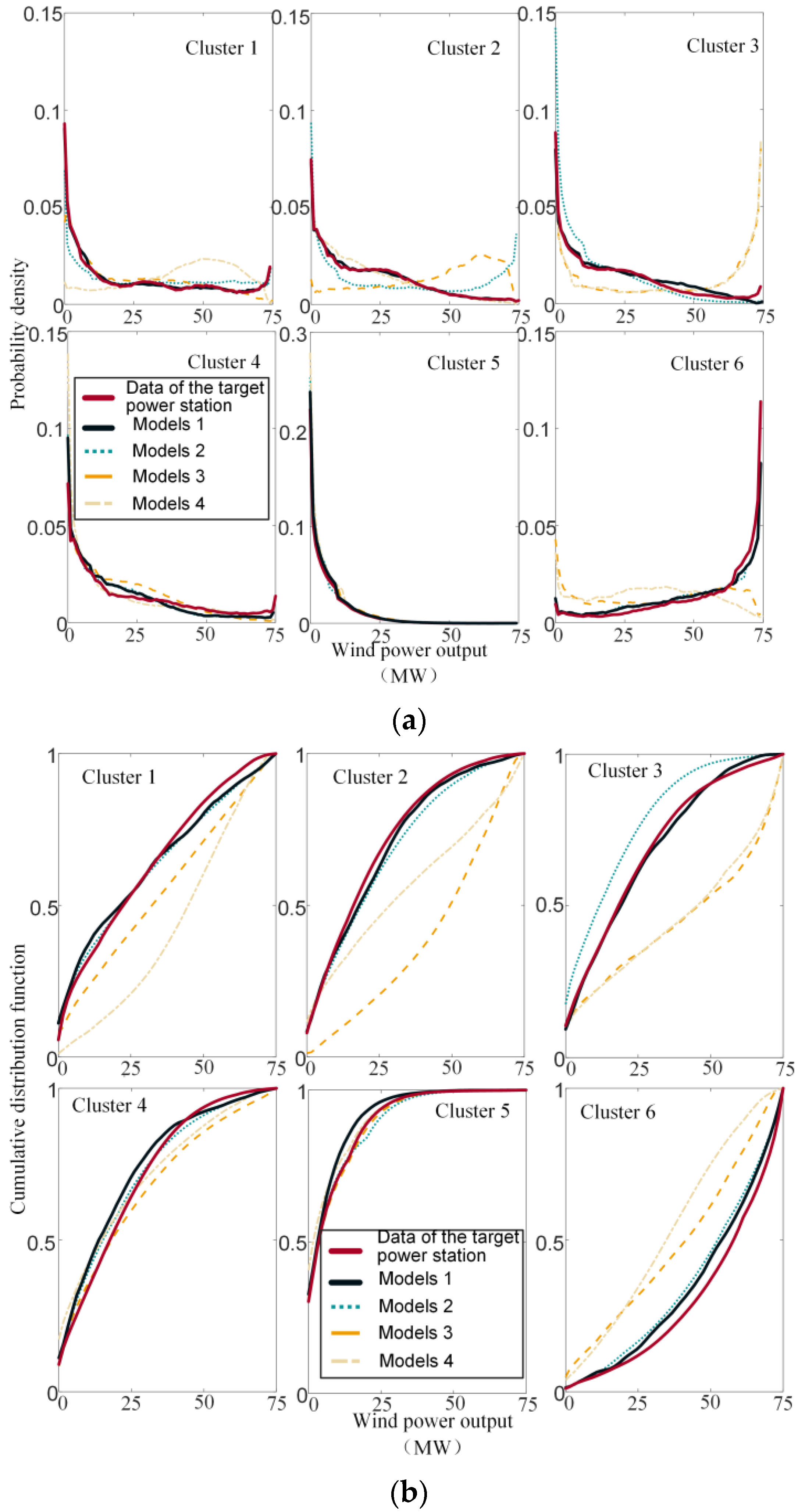
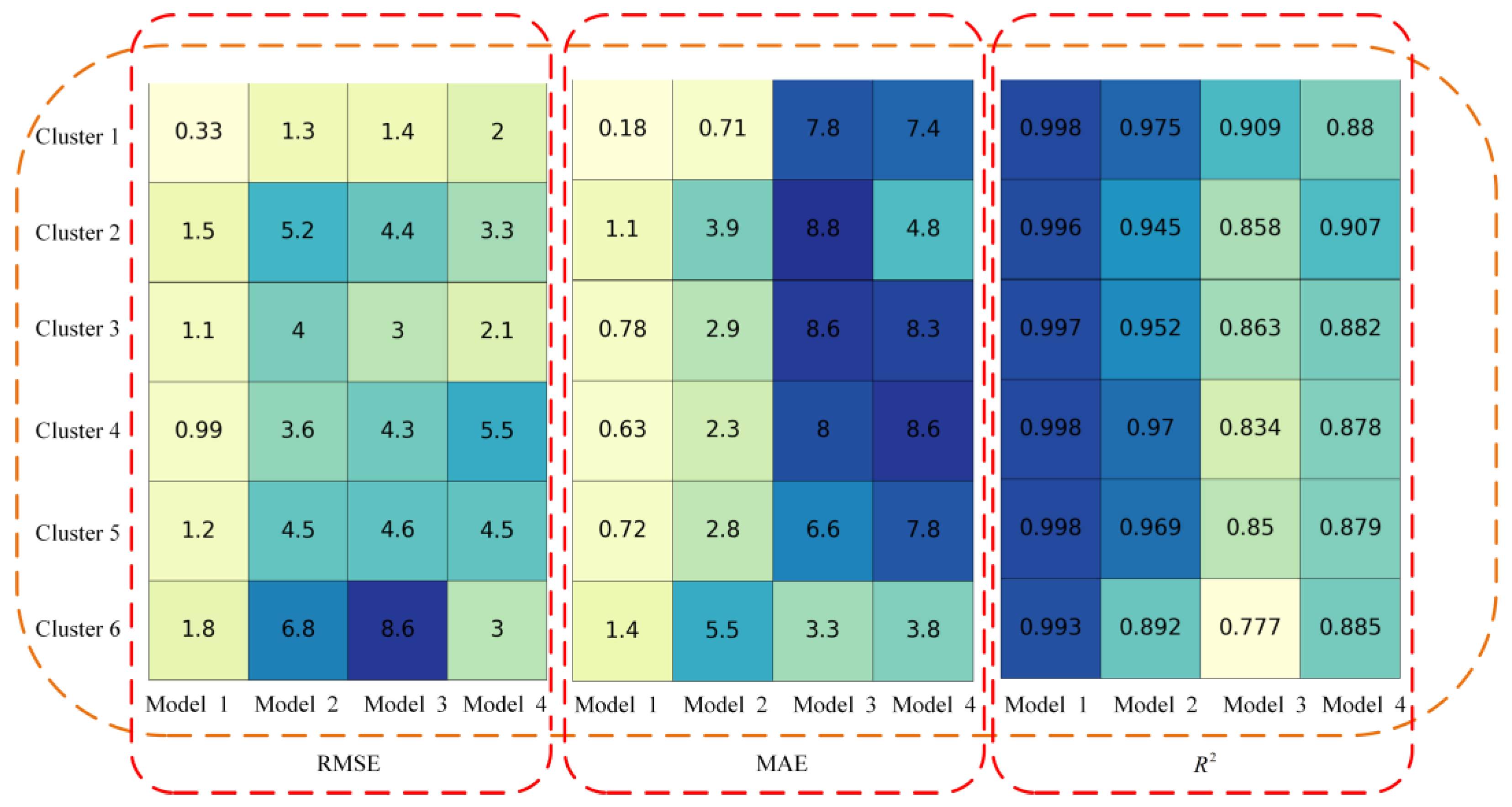
| Absolute Value of Correlation Coefficient | Strength of Correlation |
|---|---|
| [0.8, 1.0] | Extremely strong correlation |
| [0.6, 0.8] | Strong correlation |
| [0.4, 0.6] | Moderate correlation |
| [0.2, 0.4] | Weak correlation |
| [0, 0.2] | Very weak or no correlation |
| Power Station | Latitude (°N) | Longitude (°W) |
|---|---|---|
| Newly built wind farm | 39.70 | 121.66 |
| Wind Farm 2 | 39.78 | 121.56 |
| Wind Farm 3 | 40.02 | 121.82 |
| Wind Farm 4 | 42.01 | 121.84 |
| Wind Farm 5 | 39.84 | 121.66 |
| Wind Farm 6 | 39.54 | 121.57 |
Disclaimer/Publisher’s Note: The statements, opinions and data contained in all publications are solely those of the individual author(s) and contributor(s) and not of MDPI and/or the editor(s). MDPI and/or the editor(s) disclaim responsibility for any injury to people or property resulting from any ideas, methods, instructions or products referred to in the content. |
© 2023 by the authors. Licensee MDPI, Basel, Switzerland. This article is an open access article distributed under the terms and conditions of the Creative Commons Attribution (CC BY) license (https://creativecommons.org/licenses/by/4.0/).
Share and Cite
Tang, J.; Liu, J.; Wu, J.; Jin, G.; Kang, H.; Zhang, Z.; Huang, N. RAC-GAN-Based Scenario Generation for Newly Built Wind Farm. Energies 2023, 16, 2447. https://doi.org/10.3390/en16052447
Tang J, Liu J, Wu J, Jin G, Kang H, Zhang Z, Huang N. RAC-GAN-Based Scenario Generation for Newly Built Wind Farm. Energies. 2023; 16(5):2447. https://doi.org/10.3390/en16052447
Chicago/Turabian StyleTang, Jian, Jianfei Liu, Jinghan Wu, Guofeng Jin, Heran Kang, Zhao Zhang, and Nantian Huang. 2023. "RAC-GAN-Based Scenario Generation for Newly Built Wind Farm" Energies 16, no. 5: 2447. https://doi.org/10.3390/en16052447
APA StyleTang, J., Liu, J., Wu, J., Jin, G., Kang, H., Zhang, Z., & Huang, N. (2023). RAC-GAN-Based Scenario Generation for Newly Built Wind Farm. Energies, 16(5), 2447. https://doi.org/10.3390/en16052447






